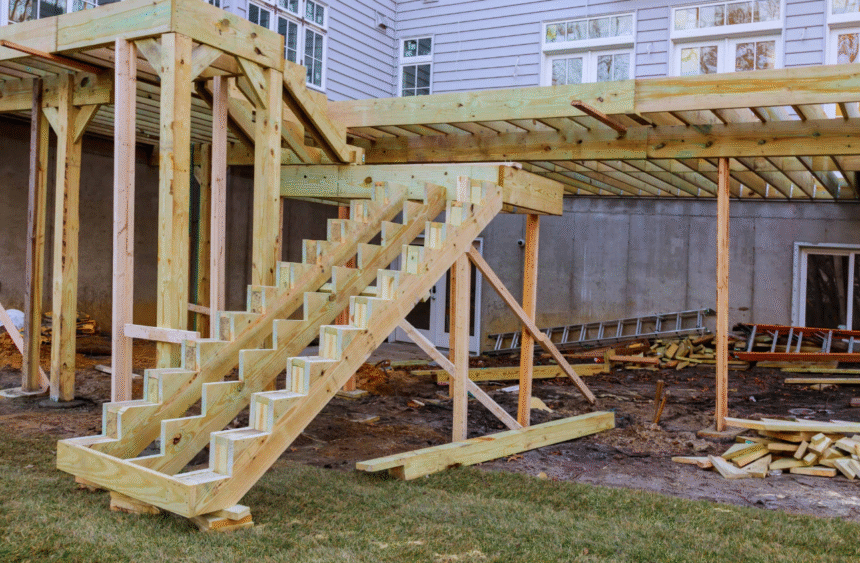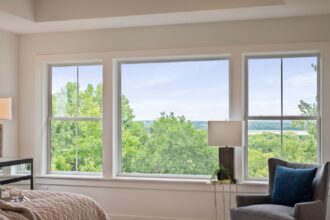Thinking of building a deck? Whether you’re aiming for a cozy backyard retreat or an entertainment-ready space, one thing’s for sure—deck building is no weekend experiment. Too often, homeowners dive in with confidence but overlook crucial structural, aesthetic, or legal aspects. The result? Costly fixes and safety concerns down the road.
This guide walks you through the essential dos and don’ts of deck construction—so you can avoid common pitfalls and nail your project like a seasoned pro.
DO: Start with a Solid Plan
Like any home improvement project, success begins with thoughtful planning. Before purchasing a single board, consider the function of your deck. Is it a quiet space for morning coffee? A hosting area for BBQs? Or maybe a multi-level platform with built-in seating and lighting?
Define your use case, measure your space, and sketch out a rough layout. Then ask:
- How will foot traffic flow from the house to the deck?
- Will you need shade, railings, or stairs?
- Are there local building codes or HOA restrictions?
Pro Tip: Check with your local municipality early. Some areas require permits, setbacks, or safety inspections before, during, and after deck building begins.
DON’T: Skip the Foundation
Think of your deck’s foundation as its spine—if it’s weak, the whole structure suffers. Some DIYers assume surface-level footings are enough, but failing to go deep can mean your deck shifts, sags, or even collapses over time.
For most regions, that means digging below the frost line and using concrete piers or footings. Not only does this provide stability, but it also protects your investment from seasonal soil movement.
Quick Reminder: Always call 811 or your local utility locator service before digging. You don’t want your project turning into an emergency.
DO: Choose the Right Materials
When it comes to decking materials, one size does not fit all. The right choice depends on your climate, budget, and maintenance preferences. Here’s a quick breakdown:
- Pressure-Treated Wood: Budget-friendly and widely available. Needs regular staining or sealing.
- Composite Decking: Low-maintenance and weather-resistant, but more expensive upfront.
- Cedar or Redwood: Naturally rot-resistant and visually appealing, but requires upkeep.
If you’re in a high-humidity area, opt for rot-resistant boards and rust-proof fasteners. For intense sun, choose fade-resistant materials to preserve color.
DON’T: Rely on Nails Alone
Deck boards and structural components need more than a hammer to stay secure. While nails might seem faster, they can loosen over time—especially in areas with temperature shifts or frequent use.
Instead, use deck screws or hidden fastener systems designed for outdoor construction. These not only provide stronger connections but also reduce surface splintering and improve the overall look.
According to the North American Deck and Railing Association, poor fastening is one of the top reasons decks fail. It’s not just about durability—it’s about safety.
DO: Prioritize Drainage and Ventilation
Moisture is the enemy of wood. Without proper airflow and water runoff, decks can warp, rot, or become slippery. Be sure to:
- Leave gaps (usually 1/8 to 1/4 inch) between deck boards.
- Slope the deck slightly away from your house.
- Use drainage systems under upper-level decks to keep lower areas dry.
Also, avoid installing your deck directly against your home’s siding without a flashing barrier. This small step prevents water from seeping into your walls, saving you from massive repair bills later.
DON’T: Ignore Railings and Safety
Even if your deck is only a couple of feet off the ground, guardrails matter. Most codes require railings for decks 30 inches or higher—but it’s a good idea to include them for any raised platform, especially if children or older adults will use the space.
Follow these general safety specs:
- Rails should be at least 36 inches high.
- Balusters should be spaced no more than 4 inches apart.
- Stairs should have graspable handrails and non-slip surfaces.
A well-built railing adds peace of mind—and can double as a stylish design feature if you opt for wood, metal, cable, or glass panels.
DO: Consider Lighting Early
Deck lighting isn’t just about ambiance—it’s about navigation and safety. Plan your lighting layout while designing the deck so you can run wiring or install solar fixtures without disrupting the finished look.
Options include:
- Recessed step lights
- Post cap lights
- Under-rail lighting
- String or bistro lights for decorative flair
Even low-voltage systems can make a big impact. And thoughtful lighting extends your deck’s usability well into the evening.
DON’T: Overlook Maintenance
Even the best-built deck needs ongoing care. Make sure your clients or readers know that deck building isn’t a one-and-done deal. Depending on the material, maintenance can include:
- Annual cleaning with deck-safe cleaners
- Re-staining or sealing wood every 2–3 years
- Inspecting for loose boards or fasteners each season
Routine care not only extends the life of your deck but keeps it looking fresh year-round.
DO: Call in a Pro for Complex Designs
While many homeowners tackle simple platforms themselves, more complex builds—multi-level decks, curved edges, integrated seating—require experienced hands.
If you’re managing a project or advising a homeowner, working with a seasoned deck contractor ensures the job meets code, functions as intended, and looks professionally polished. A quality deck doesn’t just add curb appeal—it adds long-term value to the home.
Want to see how expert-built decks come together? Browse through this deck builder’s portfolio for real-life inspiration and project ideas.
Final Thoughts
Deck building is more than hammering boards together—it’s about creating a safe, stylish, and lasting outdoor space that fits your lifestyle. By planning thoroughly, using quality materials, and respecting structural integrity, you can avoid the headaches that plague too many first-time builders.
So before you swing that first hammer, remember: measure twice, dig deep, and don’t cut corners.















